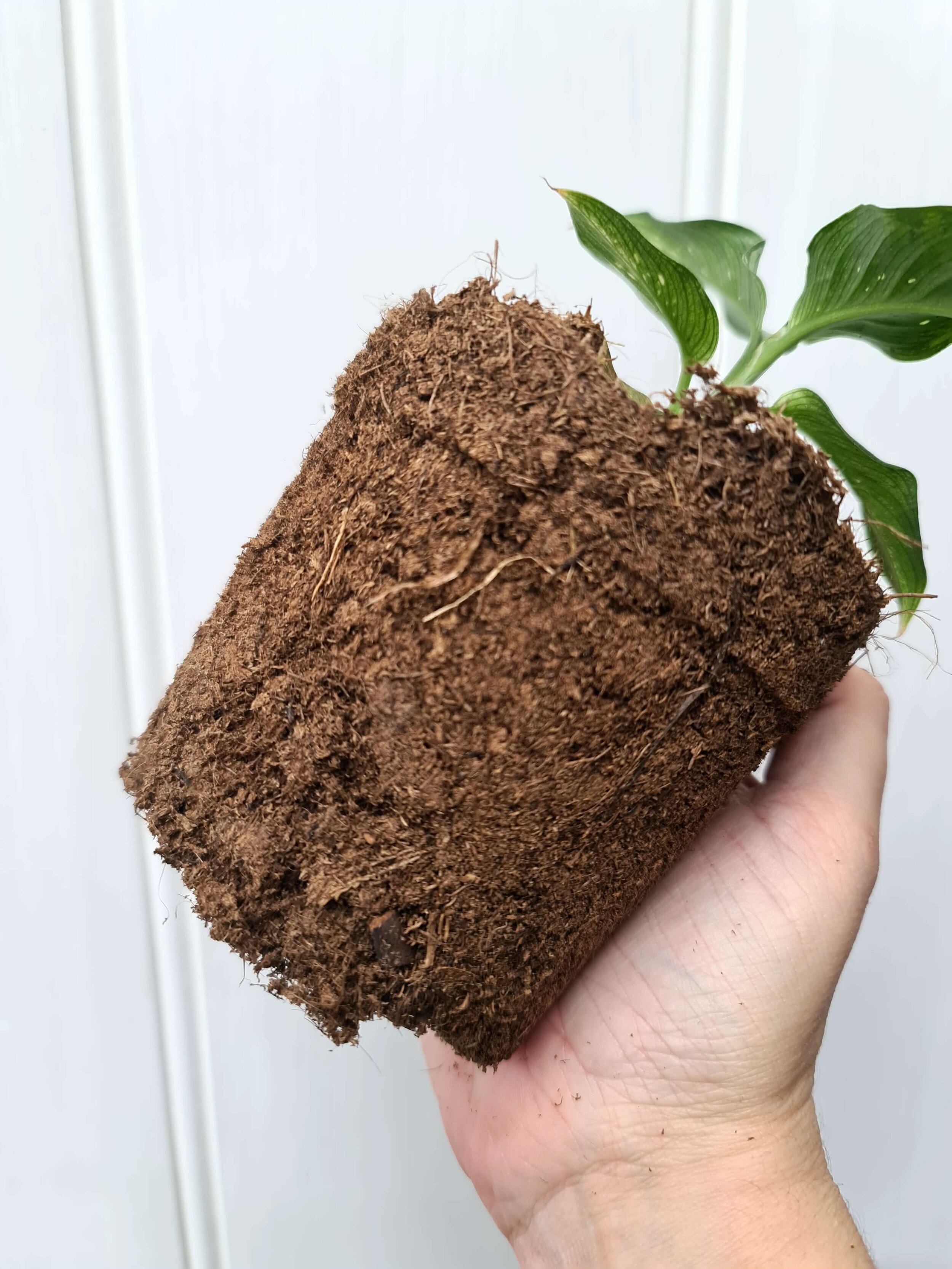Peat Moss- A How To Guide
Peat Moss ready for shipping
There are many different forms of soil that are commonly used for potting indoor plants. Verdant Dwellings only uses sphagnum Peat Moss, from propagation through to 3ft Fiddle Leaf Figs and beyond! Peat Moss is a little unique compared to other forms of potting media but once understood, is simple to use not to mention extremely beneficial for your plants and water consumption. So here is a ‘how to’ guide on how to use Peat Moss with your indoor plants, and become a pro!
Dry Peat Moss
The first thing to know is that peat moss holds water. As it’s composed of broken-down sphagnum moss, it is like a sponge, holding the water, not like a potting mix that 'gets wet' and pools excess. Peat moss will absorb pooled water so that nothing sits at the bottom, and hold a large volume meaning watering is less frequent and the amount needed each water is less.
Obviously this means you can water less often and use less water than you normally would saving time as well as water in the home. In cooler weather, particularly in the Southern States, it can be 4-6 weeks between watering or more. As the water is not evaporating with heat as quickly and the sunlight is less, plus most plants being dormant in Winter, many plants can go through the middle section of the year with only one or two waters, and some, like cactus and succulents, will not need any water at all. In the warmer half of the year, watering may be a little more, however, there is no schedule. Watering frequency will depend on geographic location as well as the position in the house, type of plant, and the time of year. It is normal, for example, for watering to be around 4 weeks apart Summer.
“First thing to know is that peat moss holds water. As its composed of broken down sphagnum moss, it is like a sponge, holding the water, not like a potting mix that ‘gets wet’ and pools excess.”
So how do we know when the peat is dry and the plant needs more water? Peat Moss has a few clues as to when its dry that make it easier. One is that dry peat is extremely light. If potted, a dry plant will only be as heavy as the pot and as you water it, you will feel the weight increase.
Peat Moss also changes colour when it is dry, compared to when it is wet. Dry peat will often be a light brown colour whereas wet peat is dark, almost black. If the peat remains wet, like when used with a Fern, it will resemble a rich chocolate cake colour. It also contracts as it dries so will pull away from the sides of the pot, leaving a gap. The contraction will happen with very dry peat and is mostly seen in plants that require drying between waters like Philodendron, Monstera, Calathea etc. You can also feel for moisture. We also don't use water meters, but simply stick our finger into the soil. Sometimes the top is dry and light in colour but the lower peat is full of moisture, so sticking your finger in will let you feel for any remaining moisture.
Just watered Peat Moss
Dry, contracted Peat
Wet Peat Moss
Peat Moss becomes hydrophobic when really dry, and water will run over the top, down the sides and out of the pot. This is why we recommend potting into or dropping the pot into a planter with no drainage. It means any water that runs off the dry peat will pool at the bottom and then be absorbed back into the peat, getting to the roots and allowing them to take what they require. If there is drainage, you can simply water in a sink with a plug, letting the bottom of the planter sit in pooled water for around 10 minutes. This way, the water will be absorbed by the peat through the hole. After ten minutes, you can sit the pot to drain, then return it to its position.
A plant that requires a bright spot will always lose some top moisture to evaporation, whereas a low light plant may need very little water at all. As the peat moss holds the water, it is important not to soak the peat every time you water it. Plants like ferns can remain very damp but will still require less water less often to maintain this. Plants that like to be on the drier side will suffer iff soaked every time they are watered. It will take them a long time to regain some dryness and root rot can occur. Therefore, watering directly over the stem of the plant and the roots will allow the water to reach them without all of the surrounding peat becoming soggy.
Peat Moss is sterile when it arrives and is broken up by Verdant Dwellings ready for use and sale. For this reason, it is important to add fertilizer of some sort when potting. We use our six-month slow release and ensure the plant is always immediately watered in after being potted up.
Peat Moss thats dry on top but still has moisture
For more information on Peat Moss, see our videos in the Plant Care section as they will help to explain how to remove some water if you have overwatered a plant.
Happy Growing!






